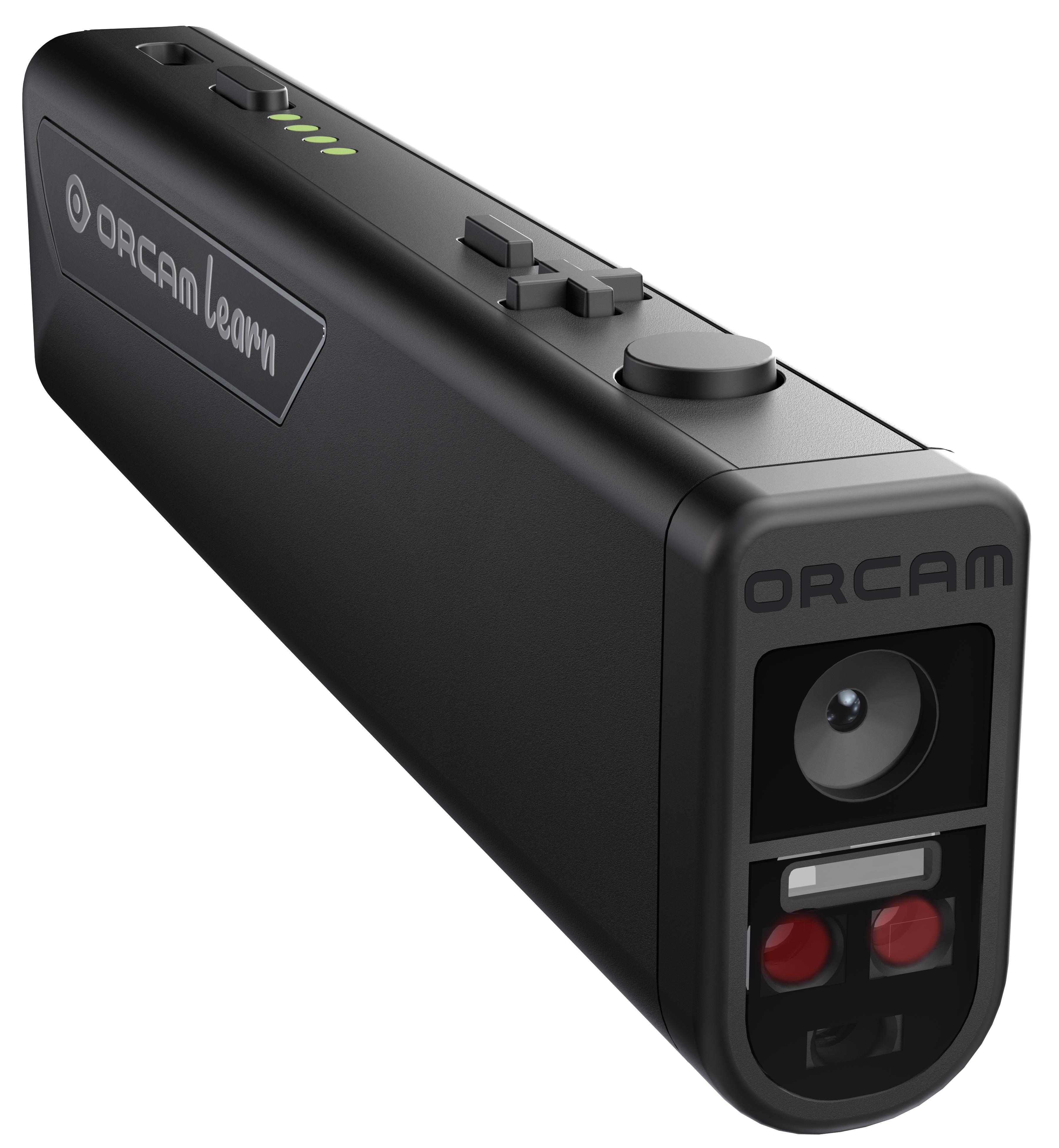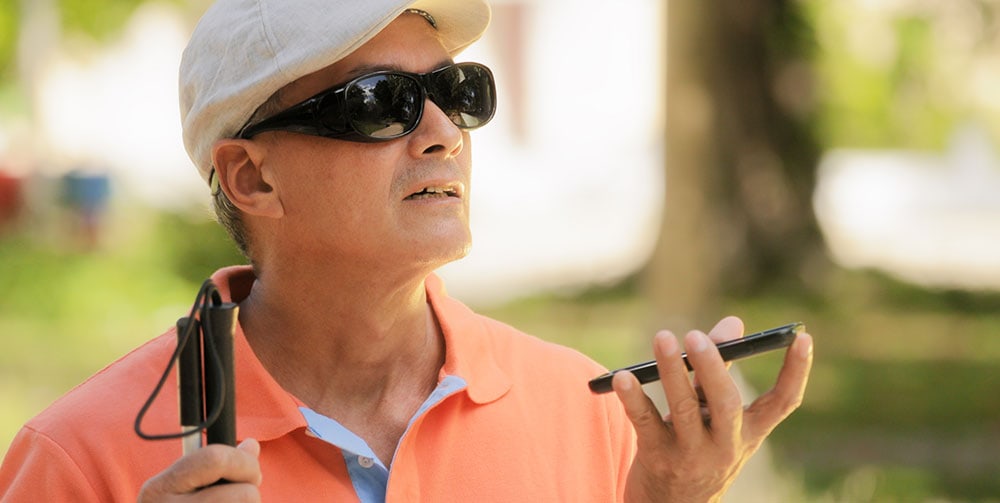OCR Devices for the Blind: Transforming Text into Speech with Ease
OCR Devices for the Blind: Transforming Text into Speech with Ease
Blog Article
Enhancing Lives With Advanced Assistive Tools for the Blind
The integration of sophisticated assistive devices for the blind is changing how individuals experience their surroundings and connect with their areas. What does this development suggest for the future of assistive modern technology and its duty in encouraging individuals?
Overview of Assistive Instruments
Assistive devices for the blind include a diverse range of devices and technologies designed to improve self-reliance and enhance the lifestyle for individuals with aesthetic impairments. These devices satisfy numerous needs, from navigation and wheelchair to interaction and day-to-day job monitoring.
Among the main groups of assistive tools consists of flexibility aids, such as white walking canes and guide pets, which aid customers navigate their surroundings securely. Electronic traveling aids, equipped with sensors and audio feedback, additionally play a considerable duty in mobility enhancement.
Furthermore, gadgets that assist with daily living activities, such as flexible kitchen tools, Braille tags, and chatting watches, encourage people to execute jobs independently. Interaction help, including screen visitors and Braille display screens, promote accessibility to info and allow individuals to engage effectively with the digital globe.
Moreover, low-tech options like magnifying glasses and large-print materials remain essential for numerous users. Jointly, these assistive devices offer not just as practical devices but also as essential enablers of autonomy, fostering better involvement in a globe that usually prioritizes sighted experiences. Their assimilation into life is important for advertising inclusivity and enhancing total wellness for those with aesthetic problems.
Cutting-edge Technologies being used
Technology in technology has actually substantially transformed the landscape of devices offered for people with aesthetic impairments. Among one of the most noteworthy improvements are smart glasses incorporated with augmented truth, which give real-time navigation aid and object recognition. These devices take advantage of advanced video cameras and expert system to deliver auditory cues, improving the customer's spatial recognition and freedom.
Additionally, mobile applications have become powerful sources, allowing customers to identify currency, read text aloud, and navigate unknown environments through spoken guidelines. Tools such as Braille displays and refreshable Braille devices remain to advance, supplying seamless connection with smartphones and computers, consequently enhancing communication and accessibility to information.
Wearable innovation, including smartwatches equipped with voice-activated attributes, further empowers customers by facilitating fast accessibility to notices and informs without requiring visual involvement. Responsive maps and 3D printing are additionally acquiring grip, using substantial representations of areas that aid in alignment and mobility training.
Jointly, these cutting-edge technologies not only boost the every day lives of aesthetically impaired people however also foster better freedom, inclusivity, and involvement with the wider community, therefore improving assumptions of access. (AI-powered visual aids)
Personal Stories of Empowerment
Empowerment typically emerges from individual experiences that highlight the transformative influence of technology on people with visual problems. Take, as an example, the story of Sarah, a young musician who reclaimed her interest for painting with making use of a clever walking stick equipped with challenge discovery. This device not just facilitated her wheelchair however instilled a newly found confidence, allowing her to navigate public rooms independently and seek her creative ventures.

These stories highlight the extensive impacts that advanced assistive gadgets can carry day-to-day live. By allowing individuals to get over barriers, technology cultivates a sense of autonomy and self-regard. Such empowerment tales serve as a testimony to the potential of advancement, showing how the right tools can substantially boost lifestyle and open doors to brand-new possibilities for those with visual impairments.
Advantages of Advanced Solutions
How can advanced solutions fundamentally boost the lives of individuals with aesthetic disabilities? The combination of innovative innovation into assistive gadgets substantially transforms everyday experiences for those affected by vision loss. These advanced solutions offer extraordinary freedom, making it possible for customers to navigate their environments with self-confidence. Devices such as clever walking canes furnished with sensing units, navigating apps, and wearable technology are developed to give real-time feedback, enhancing spatial recognition and decreasing the dangers connected with mobility.
Moreover, progressed assistive modern technologies promote social incorporation by assisting in communication and communication. Voice-activated devices and apps permit individuals to accessibility information and involve with their environments separately, breaking obstacles that formerly prevented their involvement in educational, expert, and social settings.
On top of that, the personalization and flexibility of these solutions deal with the varied requirements of customers, thus enhancing their general quality of life. Improved performance, such as object recognition and text-to-speech capabilities, empowers individuals with aesthetic problems to perform jobs that they may have as soon as found challenging. Inevitably, progressed assistive innovations not only boost freedom and security however likewise advertise dignity and self-regard, permitting users to lead fulfilling lives.
Future Trends in Assistive Tech
As technology continues Visit Your URL to develop, the landscape of assistive tools for the blind is poised for impressive developments that will certainly better boost accessibility and self-reliance. Arising trends in assistive technology show a change towards raised assimilation of expert system (AI) and machine learning, enabling tools to adjust to specific customer needs in real-time. These technologies are expected to help with even more user-friendly navigation systems that can determine challenges and offer audio feedback, substantially boosting outside wheelchair.
Additionally, the development of wearable technology, such as wise glasses geared up with enhanced truth, will certainly permit users to obtain contextual information concerning their surroundings, consequently enhancing their spatial awareness. Improvements in haptic innovation assurance to produce responsive feedback devices, allowing users to regard details via touch, boosting knowing and communication with their environment.
Telecommunication advancements are also paving the means for remote aid remedies, where experienced professionals can offer support using video phone calls, ensuring support is easily available. As these fads unfold, the future of assistive devices for the blind will unquestionably cultivate higher autonomy, equipping individuals to navigate their globe with confidence and convenience.

Verdict
The combination of sophisticated assistive tools for the blind stands for a significant innovation in promoting freedom and boosting lifestyle. By making use of cutting-edge innovations, these tools empower individuals to navigate their settings with better confidence and autonomy. As the area continues to develop, recurring r & d will likely generate even much more advanced options, better transforming the lived experiences of individuals with aesthetic disabilities and advertising a greater sense of addition within society.
The combination computer glasses for women of advanced assistive devices for the blind is transforming how individuals experience their environments and engage with their neighborhoods. try this out The integration of advanced innovation into assistive tools significantly transforms daily experiences for those affected by vision loss.As technology proceeds to evolve, the landscape of assistive devices for the blind is poised for impressive improvements that will further boost availability and self-reliance. Emerging patterns in assistive technology suggest a shift toward boosted combination of fabricated knowledge (AI) and device discovering, making it possible for tools to adapt to individual customer requires in real-time.The integration of innovative assistive gadgets for the blind stands for a considerable innovation in cultivating independence and improving quality of life.
Report this page